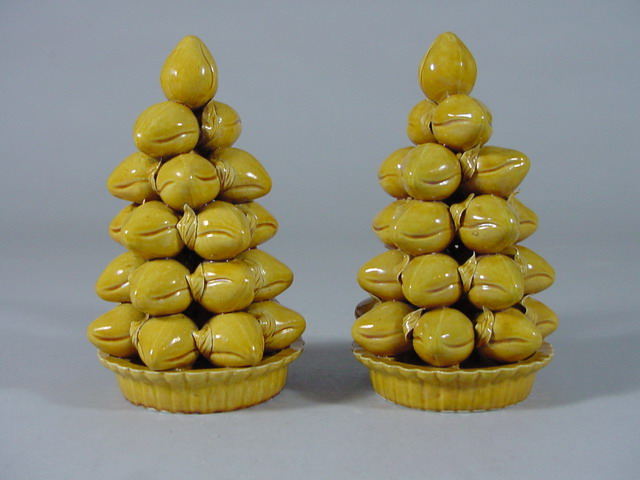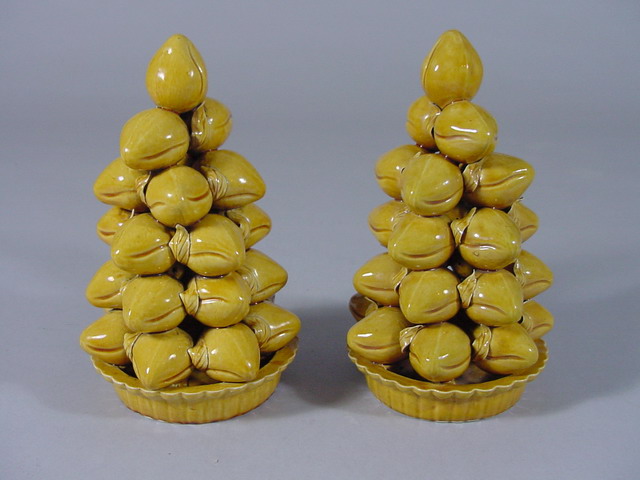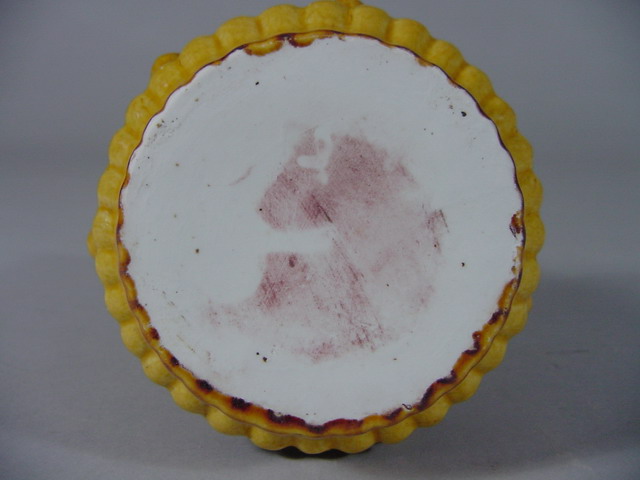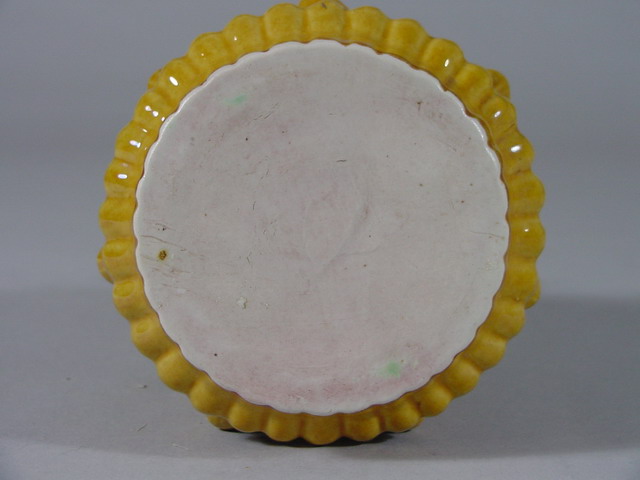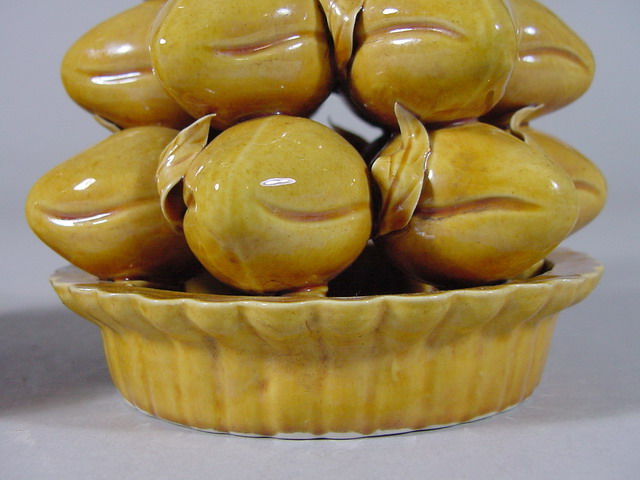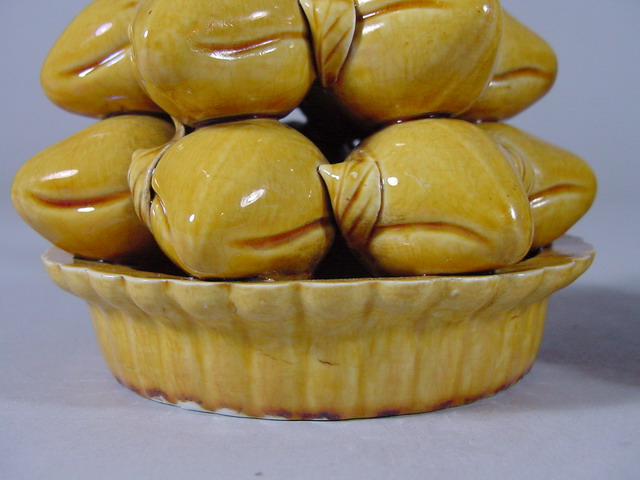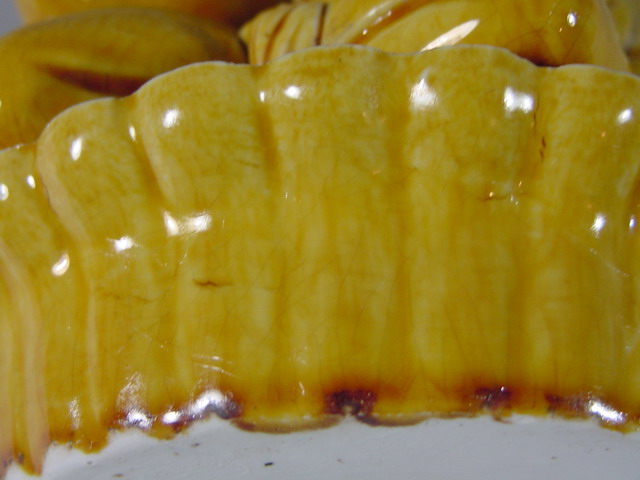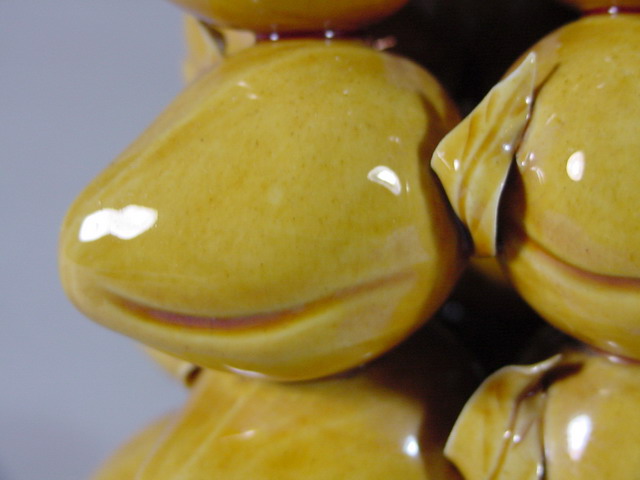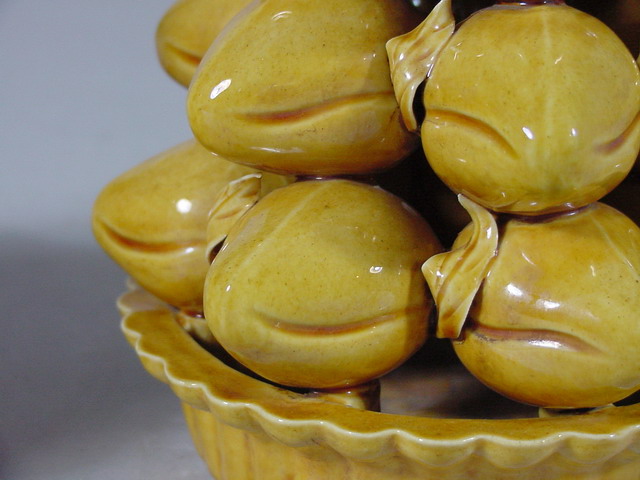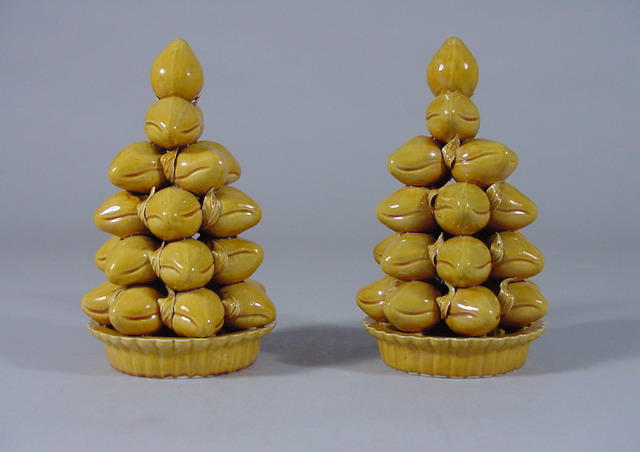
Pair of Kangxi Altar Peach Pyramids

|
An extremely rare pair of fluted trays containing layered stacks of peaches, the symbol for immortality and according to Chinese legends the most important ingredient employed by the Moon Hare pounding the drugs for the elixir of long life. These fruit trays were to be displayed at the personal altars within the palace of the Emperor, as a permanent offering to heaven. Covering the biscuit is a fine transparent Imperial yellow enamel glaze and the bottoms are unglazed exposing a fine compact paste.
These trays of stacked fruit are known as “fruit
pyramids” and were collected as curiosities in the West in the
eighteenth century. Other known examples contain different fruits such
as pomegranates, lychees or walnuts or a combination of various fruits.
The earliest documented email sur biscuit (enamel
on biscuit)
example was sketched by Gabriel de Saint-Aubin in the margin of
the 1769 auction catalogue of Monsieur Gaignat, one of the
greatest French collectors of the mid-eighteenth century. |
